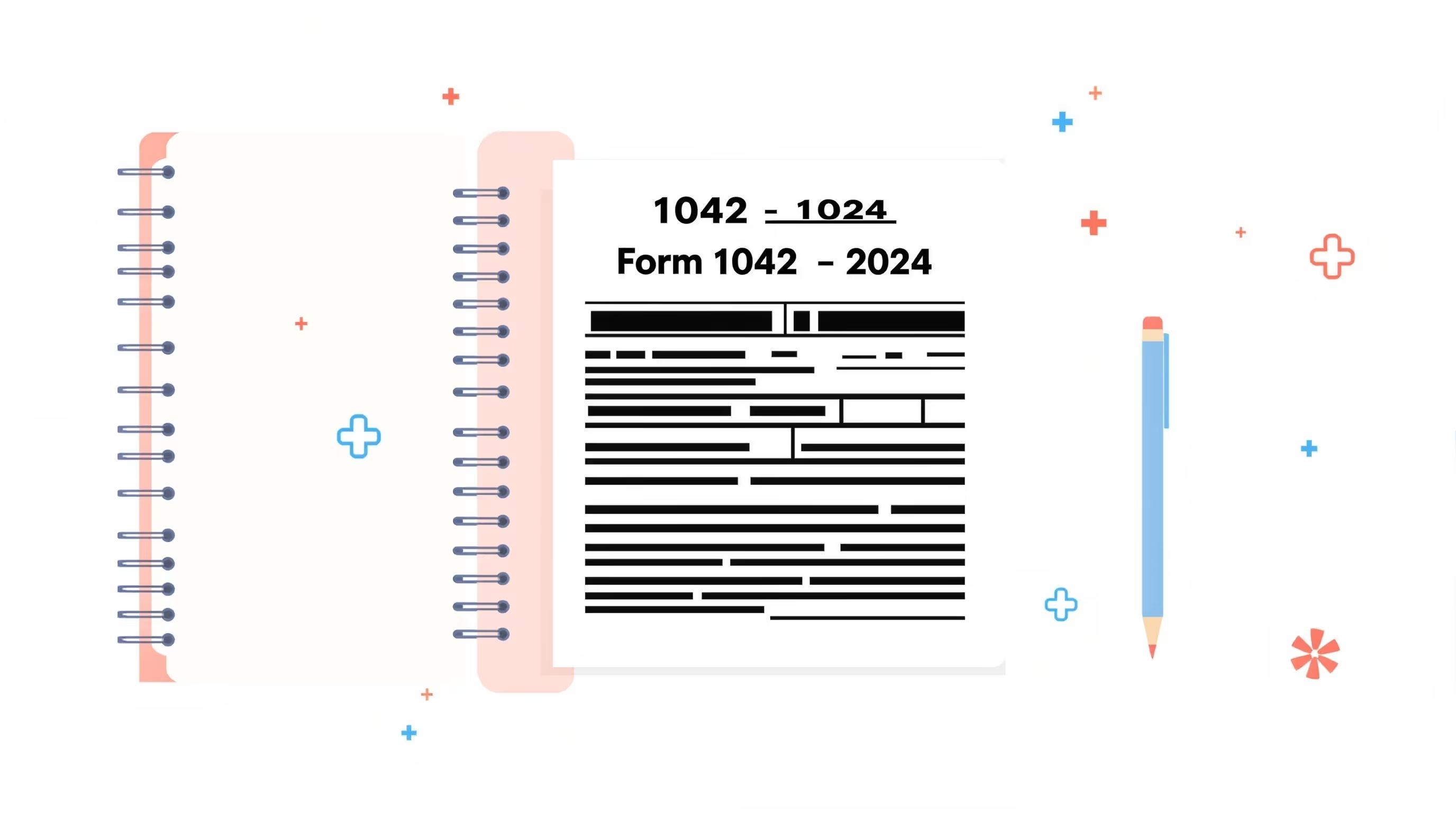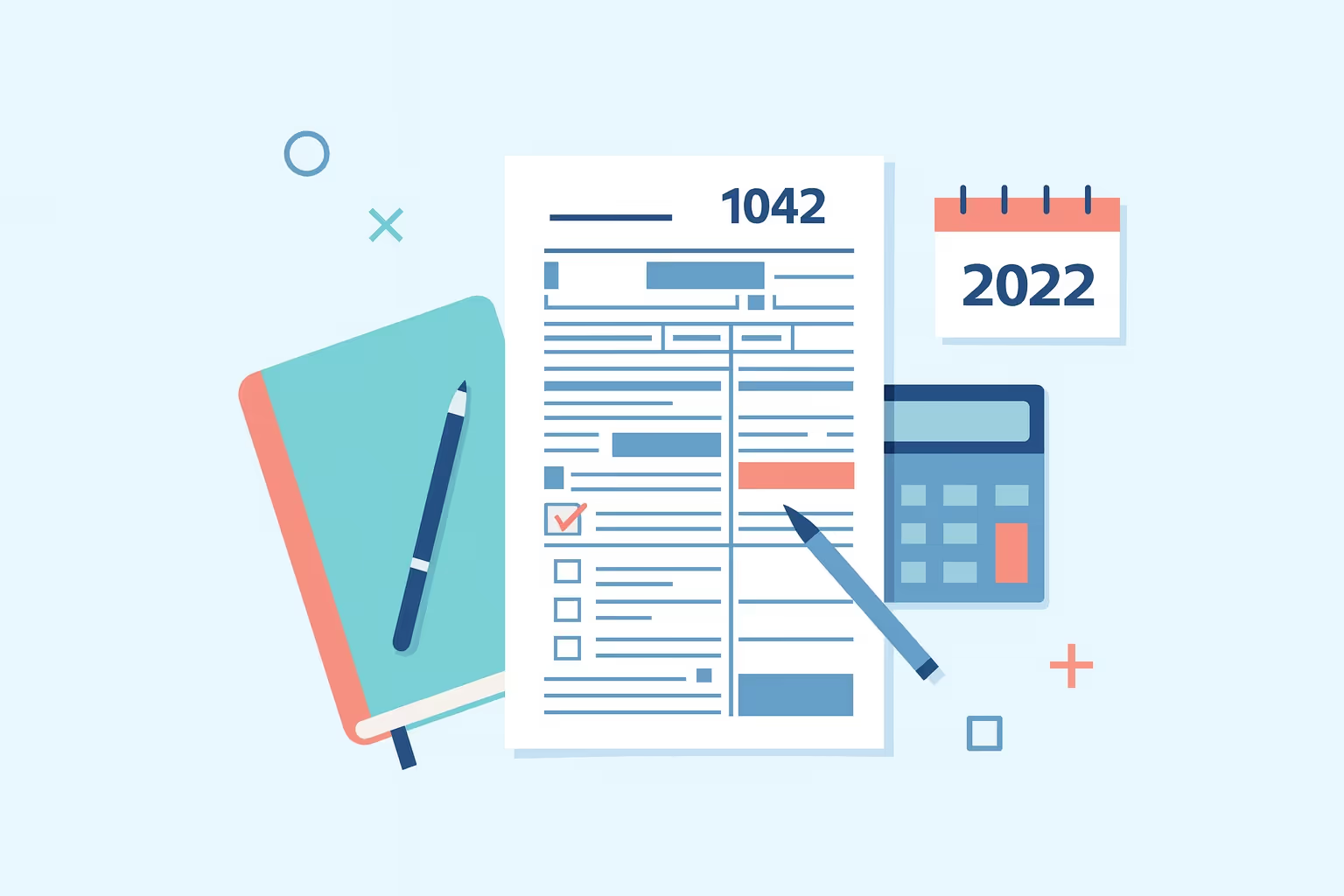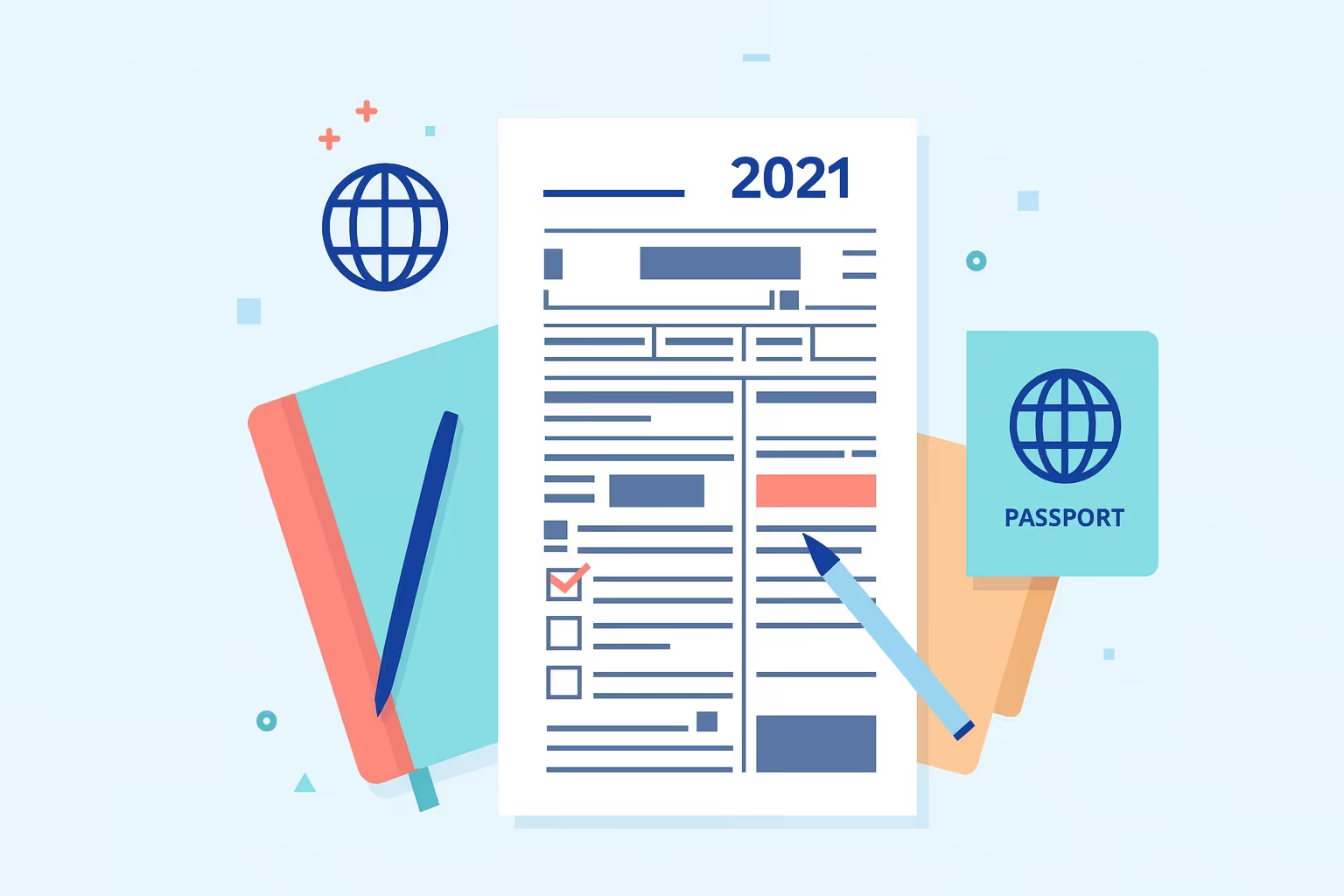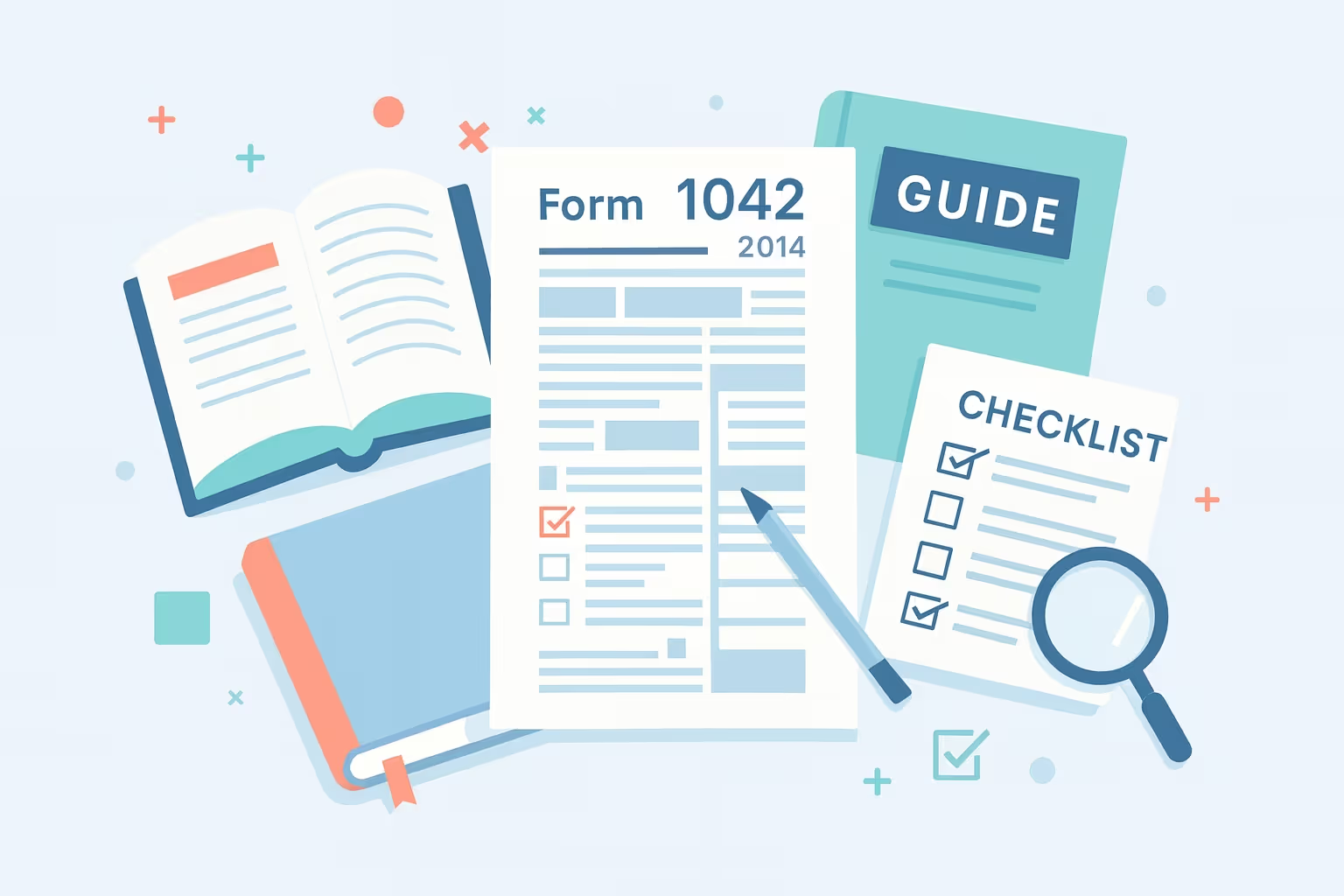Form 1042 2023 Instructions: Guide for Withholding Agents

Filing Form 1042 is essential to meeting U.S. tax reporting obligations for payments made to foreign persons. Officially titled the Annual Withholding Tax Return for U.S. Source Income of Foreign Persons, this form helps the Internal Revenue Service (IRS) track income subject to withholding and ensure compliance under federal tax law. For tax year 2023, the process applies to withholding agents responsible for reporting amounts paid, tax withheld, and any related liabilities connected to the income of foreign persons.
You must file Form 1042 if you are a withholding agent, financial institution, partnership, or other entity that paid certain U.S. source income to foreign corporations, individuals, or other entities. Even if no tax was withheld, you may still be required to report the payments. This reporting obligation extends to income types such as dividends, interest, rents, and other withheld payments under chapters 3 and 4 of the Internal Revenue Code.
Electronic filing requirements expanded for 2023, making e-filing mandatory for many withholding agents. This guide walks you through the instructions for Form 1042 2023 step by step, from gathering documentation to meeting deposit schedules, so you can report tax withheld accurately, avoid penalties, and stay compliant with IRS regulations.
Overview of Form 1042
Withholding agents use Form 1042, the Annual Withholding Tax Return for U.S. Source Income of Foreign Persons, to report tax withheld on payments made to nonresident aliens, foreign corporations, and other foreign entities. The form provides an annual summary of foreign persons' income subject to U.S. tax withholding. It works together with Form 1042-S, which reports individual payment details. Combined, both forms give the Internal Revenue Service (IRS) a complete view of all payments made and taxes withheld.
Key purposes include:
- Annual summary: Reports total amounts paid to foreign payees and total tax withheld.
- Compliance tracking: Helps the IRS verify that withholding agents followed U.S. tax rules.
- Reconciliation tool: Aligns the data between Form 1042 and all issued Forms 1042-S.
Who Must File Form 1042?
Any person or organization considered a withholding agent must file Form 1042 if they made payments of U.S. source income to foreign entities or individuals. This includes:
- Financial institutions: Banks and brokers paying foreign clients interest, dividends, or royalties.
- Partnerships and corporations: Businesses distributing income to nonresident partners or shareholders.
- Government agencies and intermediaries: Entities responsible for processing or forwarding taxable U.S. payments.
Even if no tax was withheld, a filing is still required when payments fall under the reporting scope of Form 1042 for the income of foreign persons.
Key Components of the Form
Form 1042 is divided into several core parts that align with the Internal Revenue Code (IRC) and ensure accurate tracking of federal tax liability:
- Section 1 – Record of Federal Tax Liability: Lists quarterly or quarter-monthly liabilities for U.S. source payments.
- Section 2 – Reconciliation: Confirms that totals match all submitted Forms 1042-S.
- Section 3–Section 871(m) Transactions: Reports payments related to specific derivative contracts.
- Section 4 – Qualified Derivatives Dealer (QDD): Captures QDD-specific activities and attached schedules.
For full details, see the IRS Instructions for Form 1042 (2023), which outline current filing procedures and compliance expectations.
What’s New for Tax Year 2023
The 2023 tax year introduced several significant changes that affect how withholding agents and financial institutions complete and file Form 1042. These updates expand electronic filing requirements, strengthen oversight for publicly traded partnerships (PTPs), and refine reporting for Qualified Intermediaries (QIs) and Qualified Derivatives Dealers (QDDs). Each update supports the IRS’s goal of improving efficiency, data accuracy, and international tax transparency.
Broader Electronic Filing Mandates
The IRS now requires more entities to submit Form 1042 electronically through the Modernized e-File (MeF) system.
- Financial institutions: All banks, brokers, and custodians must file electronically without exception. This ensures secure, standardized data reporting for foreign payees.
- Withholding agents: Any agent filing ten or more information returns during the year must now e-file. The rule reduces administrative errors and improves processing speed.
- Large partnerships: Partnerships with more than 100 partners are also required to file electronically. This change enhances compliance tracking and simplifies verification of large data sets.
These expanded e-filing mandates align with the IRS’s modernization initiative to reduce paper submissions and strengthen system security. For details, refer to the IRS Modernized e-File for Form 1042 resource.
Withholding on Publicly Traded Partnerships (PTPs)
New rules under Section 1446(f) require brokers transferring PTP interests to withhold ten percent of the amount realized and report the withholding on Form 1042. New income codes 57 and 58 on Form 1042-S support this requirement. These updates ensure that gains paid to foreign investors through PTP transactions are adequately captured and taxed.
Enhanced Reporting for QIs and QDDs
QIs and QDDs must now attach Schedule Q (Form 1042) to report derivative or equity-linked transactions, including substitute dividend payments under Section 871(m). This rule, outlined in the IRS final regulations, improves consistency in cross-border withholding and ensures accurate documentation for complex international transactions.
Step-by-Step Filing Instructions
Step 1 – Gather Required Information
Create a complete file before you start.
- Withholding records: Collect all Forms 1042-S issued, payee documentation, and withholding statements. Each record helps you accurately report amounts paid and tax withheld.
- Identification numbers: Verify your EIN, and confirm any QI-EIN, WP-EIN, or WT-EIN, as applicable. Accurate IDs prevent processing delays.
- Deposit proof: Download EFTPS confirmations to reconcile total tax deposits with your return amounts.
Pro Tip: Organize transactions by month and quarter-monthly period to simplify liability reporting later.
Step 2 – Complete Basic Identification Details
Enter the legal name and address that are registered with the IRS.
- Status codes: Provide both Chapter 3 and Chapter 4, even if one chapter did not apply.
- Contact information: List a responsible officer so the IRS can reach the right person quickly.
Pro Tip: If you will file Form 1042 electronically, verify your software settings and test a validation file before production.
Step 3 – Section 1: Record of Federal Tax Liability
This part reports when the liability arose, not when you deposited funds.
- Quarter-monthly periods: Report liabilities for periods 1–4 within each month. The periods end on the 7th, 15th, 22nd, and last day.
- Example: If you made a payment on February 10 that required $500 of withholding, enter $500 on the federal tax liability lines for February, period 2.
- Do not net: Do not enter negative figures or include prior-year adjustments here. Use adjustments later.
Checklist: Confirm each period total matches your internal ledger for that period.
Step 4 – Section 2: Reconciliation with Form 1042-S
This section matches your annual return to all issued Forms 1042-S.
- Gross income total: Ensure the total gross income from all 1042-S forms is equal to the amount on the reconciliation line.
- Withholding total: Verify that the total withholding reported on 1042-S forms equals the sum of liabilities in Section 1.
- Common fix: If amounts differ, recheck recipient codes, income codes, and math before filing.
Pro Tip: Run a reconciliation worksheet that ties each 1042-S batch to Section 2 totals.
Step 5 – Section 3 and Section 4 (If Applicable)
Complete these sections only when relevant.
- Section 3 (871(m)): Report potential 871(m) transactions tied to equity-linked instruments. Provide amounts and related data.
- Section 4 (QDD): If you operated as a QDD, disclose activity and attach Schedule Q. Include substitute dividend payments when required.
Step 6 – Payments, Credits, and Adjustments
Now, calculate what you owe or what the IRS owes you.
- Adjustments: Enter prior-year corrections and similar items in the adjustments line rather than Section 1.
- Year totals: Separate Chapter 3, Chapter 4, and any section 5000C amounts as instructed.
- Deposits and credits: Report total tax deposits made during the year, deposits made in the next year for the current year, credits from prior years, and tax credits withheld by other agents.
- Outcome: Compute total net tax liability and determine balance due, refund, or credit forward.
Pro Tip: When you designate a deposit for the prior year, ensure the EFTPS receipt shows the correct tax period.
Step 7 – Review and Confirm Accuracy
Perform a final quality check before submission.
- Math and IDs: Re-run totals, confirm EINs, and verify status codes.
- Matching: Confirm Section 1 totals equal Section 2 withholding totals.
- Submission method: If you file Form 1042 electronically, save the acknowledgment and transmission logs with your return package. If you mail a paper return, keep a copy of everything, and use a trackable method.
Pro Tip: Keep a year-end binder with the filed return, all 1042-S transmittals, EFTPS proofs, and reconciliation worksheets.
How to File Form 1042
The IRS provides two primary methods for filing Form 1042: electronic submission through the IRS Modernized e-File system or traditional paper filing in limited cases. Each method follows specific e-filing requirements, deadlines, and documentation standards to ensure that all withholding agents properly report income paid and related withholdable payments.
1. Electronic Filing Process
The electronic filing process is now the standard method for most filers. Entities such as financial institutions, extensive partnerships, and withholding agents submitting ten or more information returns must have their Form 1042 filed electronically.
Steps to File Electronically:
- Prepare the form using IRS-approved software compatible with Modernized e-File.
- Verify that totals for income, federal procurement payments, and tax withheld reconcile correctly.
- Submit the form through the IRS MeF system by March 15, 2024, and save your electronic acknowledgment.
- Retain a digital copy for your compliance files for at least three years.
The IRS encourages early e-filing to prevent transmission delays and identify data inconsistencies before the deadline.
2. Paper Filing (When Allowed)
Paper filing is permitted only for smaller entities not meeting e-filing thresholds. When filing by mail, include all supporting documentation, such as withholding statements, payment records, and explanations for specified federal procurement payments or source substitute dividend payments.
IRS Modernized e-File
- Deadline: March 15, 2024
- Eligible Filers: Required for most entities, including large partnerships and financial institutions
Paper Filing
- Deadline: Must be postmarked by March 15, 2024
- Eligible Filers: Allowed only for entities that fall under the e-filing threshold
3. Requesting an Extension
If you cannot meet the filing deadline, submit Form 7004 for a six-month extension.
- The extension applies only to filing, not payment of unpaid tax or effectively connected taxable income.
- File the separate form electronically or by mail before March 15, 2024.
- Include a reasonable estimate of your total liability and pay any balance owed when submitting the request.
Filing Form 1042 accurately and on time ensures compliance with U.S. tax reporting requirements for source income subject to withholding. Whether you file through the IRS Modernized e-File system or by paper, maintaining proper documentation and meeting all e-filing requirements helps prevent penalties and delays for foreign partners and entities.
Payment and Deposit Requirements
All Form 1042 tax payments must be made through the Electronic Federal Tax Payment System (EFTPS). The IRS no longer accepts paper checks for deposits related to income paid or withholdable payments. This rule applies to all withholding agents, regardless of entity size or filing method.
Electronic Deposit Rules
Payments must be made electronically using EFTPS.
- Enrollment: Register at EFTPS.gov and allow time for account setup.
- Cutoff Time: Submit payments by 8:00 PM Eastern Time on the business day before the due date.
- Documentation: To verify accuracy and timing, keep all EFTPS confirmations with your Form 1042 records.
Schedule payments in advance to prevent missed deadlines and ensure that each deposit matches your return’s liability periods correctly.
Deposit Frequency
Deposit frequency depends on the total tax withheld.
- Quarter-monthly deposits: Required when undeposited taxes reach $2,000 or more. These payments must be made within three business days after the close of each quarter-monthly period.
- Monthly deposits: Required for liabilities between $200 and $1,999, due 15 days after month-end.
- Annual payments: Allowed only when the total liability is under $200.
Example: If $2,500 of withholding arises on March 12, you must deposit it by March 15.
Late or Corrective Deposits
If you miss a due date or discover errors, make a corrective deposit immediately. Mark the payment as attributable to the correct tax year (for example, “2023 liability”) to ensure proper credit. Prompt payment helps avoid penalties on unpaid tax and keeps your total net tax liability in good standing.
Attachments and Recordkeeping
Proper documentation is essential when filing Form 1042. The IRS requires specific attachments to support your reported amounts, especially when your filing involves foreign entities, withholding agents, or transactions tied to complex instruments such as source substitute dividend payments. Accurate records also help verify reconciliation between liabilities, deposits, and income paid to foreign persons.
Required Attachments
- Schedule Q (Form 1042): Attach this schedule if you operated as a Qualified Derivatives Dealer (QDD) during the year. It summarizes tax liability from derivative transactions and equity-linked payments.
- Form 8288-A: Include this if you handled U.S. real property interest transactions subject to withholding.
- Form 2848: Attach a power of attorney if a representative is authorized to discuss your return.
- Amended Forms 1042-S: Include copies if you filed corrections after submitting the original forms.
Always double-check that totals in all attachments match the figures reported on Form 1042 to avoid processing delays.
Supporting Documentation
Keep all relevant financial and withholding records, including:
- Copies of Form 1042 and all filed attachments
- All Forms 1042-S have been issued and received.
- Proof of total tax deposits made through EFTPS
- Bank statements and internal ledgers showing amounts withheld and federal procurement payments
Maintain these documents for at least three years from the return's due date. Proper recordkeeping ensures compliance with IRS audit requirements and helps confirm accuracy if future questions arise regarding federal tax liability or adjustments.
Common Mistakes to Avoid
Filing Form 1042 involves multiple calculations and cross-references, and even minor errors can lead to costly penalties or delayed processing. Understanding where most filers go wrong helps ensure that your return accurately reflects total tax reported and your withholding obligations for the calendar year.
Incorrect or Missing Identification Information
Many errors stem from using the wrong employer identification number or leaving it blank. Each withholding entity must use the correct EIN, including qualified intermediaries and foreign partnerships. Submitting a return under the wrong number can cause IRS processing delays or misapplied deposits.
Misreporting Withholding Liability
Some filers are confused about when to report liability and when to deposit tax. Remember that Form 1042 tracks effectively connected income and certain income based on when withholding occurred—not when payments were deposited. Always report by period to match the IRS’s quarter-monthly liability schedule.
Mismatched Totals and Chapter Errors
Inconsistencies between Form 1042 and all Forms 1042-S are among the most common red flags. Ensure totals align across all schedules and accurately reflect your withholding agent’s chapter under the Internal Revenue Code. Mixing up Chapter 3 and Chapter 4 figures can result in an IRS notice or additional documentation requests.
Missing or Late Excise and Employment-Related Filings
Some filers overlook that related excise or employment tax returns must be filed when certain payments overlap with Form 1042 obligations. For example, a nonresident alien employee may generate income and employment-related withholding, which must be reconciled correctly. Failure to do so may eliminate an administrative exemption or trigger unnecessary penalties.
Improper Carryovers and Prior-Year Adjustments
When reporting balances from the preceding calendar year, clearly separate current and prior adjustments. Do not combine accumulated and current earnings or overpayments unless you can document their source. The IRS requires clear audit trails for refund claims or credit transfers.
Misclassification of Foreign Payees and Partners
If a foreign payee fails to provide valid documentation or you misclassify a foreign partner’s distributive share, your liability can increase. Always confirm foreign status with the proper Form W-8 and maintain verification records.
When correcting errors, file promptly and demonstrate that any oversight was not willful neglect—this approach can often support a request for penalty relief.
Zero Activity or Dormant-Year Filings
A “zero activity” or “dormant” year occurs when a withholding agent has no reportable transactions or tax withholding during the filing period. Even when no income tax returns are due, the IRS may still require Form 1042 to confirm your entity’s inactive status for that year.
When Filing Is Not Required
You generally do not need to submit Form 1042 if:
- No related payments were made to foreign persons or entities.
- No beneficial owner income was issued or withheld.
- No U.S.-source income or reportable withholding occurred during the year.
Submitting no return in these cases is acceptable as long as there are no outstanding credits or prior reporting obligations.
When Filing Is Still Required
You must still file Form 1042 marked as “zero activity” if any of the following apply:
- You issued or were required to issue Forms 1042-S during the year.
- You have unused prior-year credits or refunds that must carry forward.
- You hold an active Qualified Intermediary, Withholding Partnership, or Withholding Trust agreement.
This filing verifies that your account remains compliant under IRS regulations.
Special Considerations
Entities responsible for excise tax or planning future payments must continue submitting excise tax returns and related filings. Maintaining accurate dormant-year documentation prevents compliance gaps and ensures smooth reactivation once operations or withholding activities resume.
First-Time Filer Tips
Filing Form 1042 for the first time can feel challenging, but a structured approach helps you stay organized and compliant. Understanding key requirements for withholding agents, foreign entities, and foreign partners ensures accurate reporting of U.S. source income and proper documentation of all withholding activity.
Pre-Filing Preparation
Before completing the form, gather:
- All Forms 1042-S show income paid and tax withheld
- Your employer identification number (EIN) and entity classification under Chapters 3 and 4
- Proof of all deposits made through EFTPS during the year
- Current documentation for each payee’s foreign status, such as valid Forms W-8
Start preparing at least two months before the due date to prevent last-minute errors.
Understanding Chapters 3 and 4
- Chapter 3 covers traditional withholding on payments to nonresident aliens and other foreign entities.
- Chapter 4 (FATCA) identifies and reports foreign financial institutions and certain nonfinancial entities.
First-time filers should review both chapters carefully and confirm which rules apply. Consistent documentation, early planning, and accurate classification help establish a strong foundation for future compliance and timely filing.
FAQs: Annual Withholding Tax Return for Foreign Persons
Do I need to file the annual withholding tax return if I didn’t withhold any tax?
Yes. You must still file Form 1042 if you issued any Forms 1042-S to foreign persons, even if no tax was withheld. The filing requirement is based on reporting, not withholding amounts. Filing confirms your compliance, keeps your entity in good standing, and avoids potential IRS notices or delays in processing future returns.
What’s the difference between Form 1042 and Form 1042-S for the income of foreign persons?
Form 1042 summarizes your total annual withholding and federal tax liability lines, while Form 1042-S reports specific payments to each foreign person. The two must reconcile exactly. Form 1042 reflects the overall totals for the year, while Form 1042-S provides the detailed breakdown for each transaction, ensuring complete transparency with the IRS reporting system.
How can I correct errors on my annual withholding tax return?
To correct errors, file an amended Form 1042 clearly marked “Amended.” Attach all corrected Forms 1042-S and confirm that totals reconcile across every line. Ensure all federal tax liability lines are accurate before submission. You must submit the amended form using the same filing method—electronically or by mail—according to your e-filing requirements for that tax year.
What are the penalties for late filing or payment by a withholding agent or financial institution?
Late filings may trigger a 5% monthly penalty for unpaid tax, up to a maximum of 25%. Financial institutions and withholding agents can request relief by demonstrating that the delay was due to reasonable cause and not willful neglect. Supporting documentation is essential. Filing promptly and maintaining accurate records helps prevent interest charges and potential compliance reviews from the IRS.
How do I handle deposits made in the following year by foreign entities or partners?
When a foreign entity or partner deposits year-end, designate the payment for the correct year within EFTPS. For example, a January 2024 deposit for 2023 liability must be coded “2023.” Proper designation ensures the payment aligns with your Form 1042 totals, avoiding mismatched credits and ensuring reported liabilities accurately reconcile with IRS systems.














